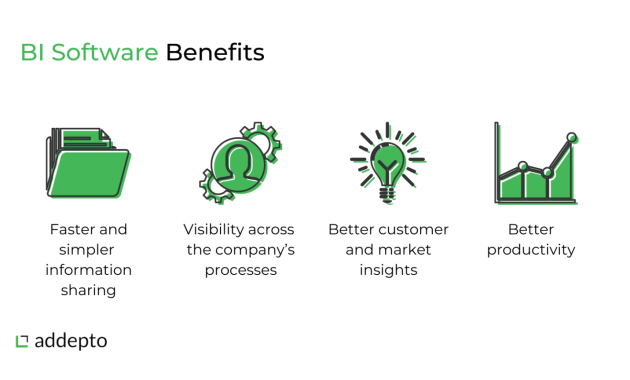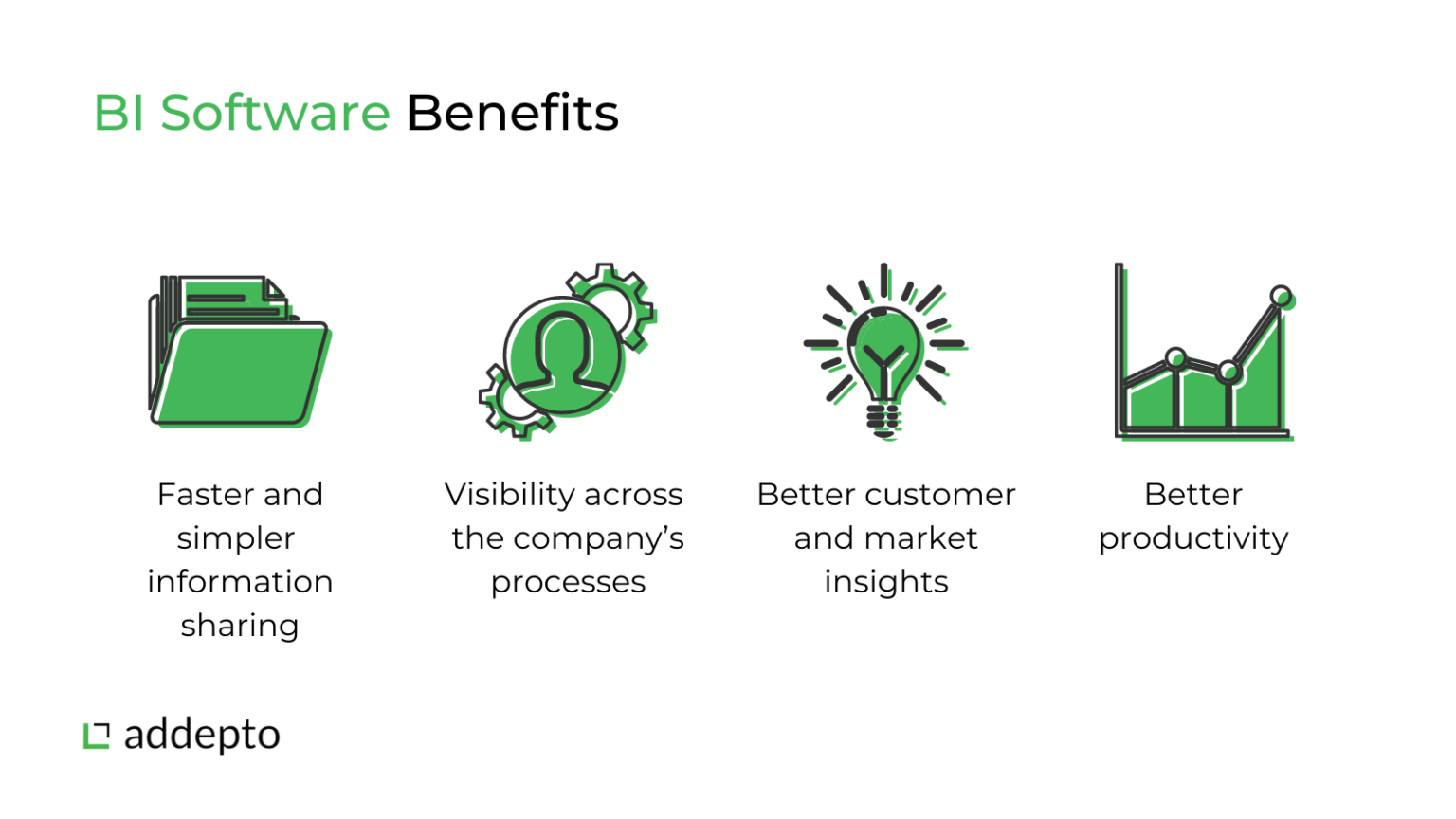
Your First 5 Steps in Business Intelligence Software: A Beginner’s Guide
Embarking on the journey of data analysis can feel daunting. Business Intelligence (BI) software offers powerful tools. This guide provides a clear roadmap. We will cover your first 5 steps in business intelligence software. It’s designed for those new to the field. It will help you navigate the initial stages. This ensures you can leverage the software effectively. Understanding these steps is critical for success. They lay the foundation for data-driven decision-making. This guide will help you get started.
Understanding the Fundamentals of Business Intelligence
Before diving into the steps, grasp the core concepts. Business intelligence software transforms raw data into actionable insights. It uses various tools. These include data visualization, reporting, and data mining. The goal is to help businesses make informed decisions. BI software consolidates data from multiple sources. This includes databases, spreadsheets, and cloud applications. It cleans, organizes, and analyzes this data. This process reveals trends, patterns, and anomalies. These insights improve operational efficiency. They also drive strategic growth. The benefits are significant. They range from increased profitability to better customer service.
Step One: Defining Your Business Objectives
The first step is crucial: defining your goals. What do you hope to achieve with BI software? Are you trying to improve sales? Perhaps you want to optimize marketing campaigns. Or maybe you aim to streamline operations. Clearly defined objectives guide your data analysis. They also shape your choice of metrics. Without clear objectives, your efforts will be directionless. You’ll struggle to measure success. Start by identifying key performance indicators (KPIs). These are measurable values. They demonstrate how effectively a company is achieving key business objectives. Examples include customer acquisition cost, churn rate, and website conversion rate. Document your objectives. Share them with your team. This ensures everyone is aligned.
Step Two: Data Source Identification and Preparation
Once objectives are set, find your data sources. Your data might come from various places. These include customer relationship management (CRM) systems. Also, enterprise resource planning (ERP) software. It might also include marketing automation platforms. Identify all relevant sources. Note the format of the data. Consider the volume and velocity of the data. The next step is data preparation. This involves cleaning and transforming the data. This process ensures data consistency. It also improves data quality. Data preparation often takes the most time. It’s a critical step. Poor data quality leads to inaccurate insights. It results in flawed decisions. Use data integration tools to automate this process. These tools extract, transform, and load (ETL) data. They simplify the process. They also enhance data accuracy.
Step Three: Selecting and Implementing Your BI Software
Choosing the right BI software is vital. Several options exist. Consider your budget, technical expertise, and specific needs. Some popular BI software options include Tableau, Power BI, and Qlik Sense. Each has its strengths and weaknesses. Research each platform. Evaluate its features, pricing, and user reviews. Consider ease of use. Also, evaluate the software’s ability to integrate with your existing systems. Once you’ve chosen your software, implement it. This involves installing the software. It also means connecting it to your data sources. Provide training to your team. Ensure they understand how to use the software. Proper implementation sets the stage for success. It ensures you can start analyzing your data. It also allows you to generate meaningful insights.
Step Four: Data Visualization and Dashboard Creation
Data visualization is a key feature of BI software. It transforms data into visual formats. These formats include charts, graphs, and dashboards. These visualizations make complex data easier to understand. They also help identify trends and patterns. Start by creating dashboards. These dashboards provide an overview of your KPIs. They also provide key performance indicators. Use charts and graphs to represent your data visually. Select the right chart type for your data. For example, bar charts show comparisons. Line charts track trends over time. Scatter plots reveal correlations. Keep your visualizations simple and clear. Avoid clutter. Use colors and labels effectively. This improves readability. It also enhances understanding. Regularly update your dashboards. Ensure they reflect the latest data. Regularly review the data.
Step Five: Data Analysis and Reporting
The final step is data analysis and reporting. Use your BI software to analyze your data. Look for patterns, trends, and anomalies. Ask critical questions about your data. This includes: What are the key drivers of sales? What factors influence customer churn? How can we improve operational efficiency? Use the software’s reporting features. Create reports to share your findings. These reports should be clear, concise, and actionable. Share your insights with stakeholders. Encourage data-driven decision-making. Continuously monitor and refine your analyses. This approach ensures you stay on top of the data. It also helps you to adapt as your business evolves. Regular analysis is key to maximizing the value. It helps to maximize the value of your BI software investment. Regular reporting is also key.
Beyond the Basics: Advanced Business Intelligence Techniques
Once you master these five steps, explore advanced techniques. These include predictive analytics. Also, explore data mining and machine learning. Predictive analytics uses historical data. It predicts future outcomes. Data mining uncovers hidden patterns. Machine learning automates data analysis. These techniques provide deeper insights. They also drive more informed decisions. Consider investing in further training. This will enhance your skills. This will also expand your knowledge. Learn about advanced features. These include data modeling and data governance. Stay up-to-date. Keep up with the latest BI trends. This will ensure you remain competitive. This will help you leverage the full power of your BI software. This will also help you make data-driven decisions.
The Importance of Continuous Learning and Adaptation
Business intelligence is not a one-time project. It’s an ongoing process. Continuous learning and adaptation are essential. The business landscape changes constantly. New data sources emerge. New technologies develop. Stay informed about the latest BI trends. Attend webinars and conferences. Read industry publications. Network with other professionals. Be prepared to adapt your strategies. Adjust your approach. This will ensure you remain successful. Regularly evaluate your BI software implementation. Identify areas for improvement. Refine your processes. Always strive to improve your data analysis skills. This ensures you derive maximum value. It also helps to maximize the value from your BI software. Continuous learning is key to success. It is a must for business intelligence.
By following these five steps, you can successfully implement BI software. You can also harness the power of data analysis. This will help you make more informed decisions. This will also drive business growth. Remember to start with clear objectives. Properly prepare your data. Choose the right software. Visualize your data effectively. Analyze your findings. Embrace continuous learning. Embrace data-driven decision-making. This will lead to success. Your investment in business intelligence software will pay off. This will transform your business. It will help you make better decisions. These decisions will be based on data.
Business intelligence software offers huge potential. It is a powerful tool. It can significantly improve your business. Start today. Take these steps. You’ll soon see the benefits of data-driven decisions. The initial stages of using business intelligence software can be complex. Following these steps will help. It helps with the initial stages. It also helps to ensure success. Embrace the power of data. Use business intelligence software effectively. This ensures informed decision-making. This will drive your business forward.
The effective use of business intelligence software offers many benefits. It gives you a competitive edge. It also enhances your ability to make data-driven decisions. It will also help you achieve your business goals. It will also help you stay ahead of the curve. Remember to continuously refine your approach. This will help you adapt. This will also help you stay ahead. It is key to ongoing success. It is key for business intelligence software.
Business intelligence software is a valuable investment. Start with these five steps. You will be on your way to success. Embrace the power of data. You will transform your business. You will make better decisions. Business intelligence software is your partner. It is in the journey to data-driven success.
[See also: Related Article Titles]

